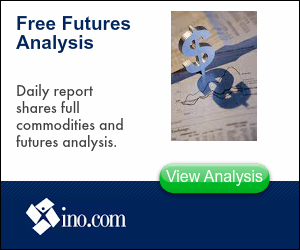Dow tumbled 261 (finishing near the lows), decliners over advancers 5-1 & NAZ sank 87. The MLP index lost 8+ to the 393s (not seen since Dec 2012) & the REIT index slid back 1+ to the 312s. Junk bond funds were sold & Treasuries advanced, bringing the yield on the 10 year Treasury down to 2.2%. Oil is back in the 51s (down 10 from its recent highs) & gold climbed higher.
AMJ (Alerian MLP Index tracking fund)
![Live 24 hours gold chart [Kitco Inc.]](http://www.kitco.com/images/live/gold.gif?0.823646582628499)

The NYSE shut down its main market because of a computer malfunction, forcing traders to steer orders elsewhere in the biggest disruption to an American equity venue in almost 2 years. The suspension, announced to securities firms thru notices on the NYSE website around 11:32 AM, dropped the largest US share platform out of the network of trading platforms that make up the American equity market. That network kept running as exchanges such as the NAZ & Bats Global Markets picked up the runoff. “We’re currently experiencing a technical issue that we’re working to resolve as quickly as possible,” the NYSE said. “We will be providing further updates as soon as we can, and are doing our utmost to produce a swift resolution, communicate thoroughly and transparently, and ensure a timely and orderly market re-open.” It was just before 2PM that the breakdown, which affected 2 of 3 venues, was repaired & the exchange was working to reopen. While rare, computer breakdowns in electronic markets have become an unavoidable fact of life for American investors over the past decade & a half amid computer advances & regulation. The stock exchange operator said the issue is internal & not a “cyber breach.”
Federal Reserve (FED) officials in Jun saw the economy moving toward conditions that would support an interest-rate increase, while also expressing concern about weak consumer spending & risks from China & Greece. Members of the FOMC “saw economic conditions as continuing to approach those consistent with warranting a start” to interest-rate increases at some point, according to minutes of Jun 16-17 meeting. All members but one “indicated that they would need to see more evidence that economic growth was sufficiently strong.” FED officials in Jun forecast they would raise rates twice this year, while lowering their outlook for subsequent increases. Since then, global markets have been shaken by the rising risk of a Greek exit from the euro & a rout in Chinese stocks. Several officials “mentioned their uncertainty about whether Greece and its official creditors would reach an agreement and about the likely pace of economic growth abroad, particularly China and other emerging market economies.” Many members expected the economy to be near full employment by year-end if growth progressed as they expected. Officials expected the unemployment rate to average 5¼% in Q4. The minutes also showed officials were cautious about the economic outlook. Among their concerns were lingering consumer caution, & drags on investment & exports resulting from lower energy prices & a stronger dollar. Inflation continues to linger below the 2% goal, & global turbulence is posing new risks. The benchmark interest rate has been kept near zero since Dec 2008. While the forecast for the rate this year was unchanged in Jun, 7 of 17 members now project either one rate increase or none in 2015, up from just 3 in Mar
While dreary days are becoming common, the outage at the NYSE brought excitement to traders. Trading was not disturbed as alternatives were available for buyers & sellers. FED officials are thinking of 1 or 2 increases this year, which would still leave the benchmark rate in low territory. That can not be described as new. Greece will remain front & center until the Sun meeting in Europe decides its fate, which looks to be dismal. The plunge in the Chinese stock market is another dark cloud hanging over the markets. Dow is down 300 YTD, back to where it was in early Nov (on the way up).
Dow Jones Industrials
AMJ (Alerian MLP Index tracking fund)
| CLQ15.NYM | ....Crude Oil Aug 15 | ....51.51 | (16%) |
![Live 24 hours gold chart [Kitco Inc.]](http://www.kitco.com/images/live/gold.gif?0.823646582628499)

The NYSE shut down its main market because of a computer malfunction, forcing traders to steer orders elsewhere in the biggest disruption to an American equity venue in almost 2 years. The suspension, announced to securities firms thru notices on the NYSE website around 11:32 AM, dropped the largest US share platform out of the network of trading platforms that make up the American equity market. That network kept running as exchanges such as the NAZ & Bats Global Markets picked up the runoff. “We’re currently experiencing a technical issue that we’re working to resolve as quickly as possible,” the NYSE said. “We will be providing further updates as soon as we can, and are doing our utmost to produce a swift resolution, communicate thoroughly and transparently, and ensure a timely and orderly market re-open.” It was just before 2PM that the breakdown, which affected 2 of 3 venues, was repaired & the exchange was working to reopen. While rare, computer breakdowns in electronic markets have become an unavoidable fact of life for American investors over the past decade & a half amid computer advances & regulation. The stock exchange operator said the issue is internal & not a “cyber breach.”
NYSE Suspends Trading in All Securities
Federal Reserve (FED) officials in Jun saw the economy moving toward conditions that would support an interest-rate increase, while also expressing concern about weak consumer spending & risks from China & Greece. Members of the FOMC “saw economic conditions as continuing to approach those consistent with warranting a start” to interest-rate increases at some point, according to minutes of Jun 16-17 meeting. All members but one “indicated that they would need to see more evidence that economic growth was sufficiently strong.” FED officials in Jun forecast they would raise rates twice this year, while lowering their outlook for subsequent increases. Since then, global markets have been shaken by the rising risk of a Greek exit from the euro & a rout in Chinese stocks. Several officials “mentioned their uncertainty about whether Greece and its official creditors would reach an agreement and about the likely pace of economic growth abroad, particularly China and other emerging market economies.” Many members expected the economy to be near full employment by year-end if growth progressed as they expected. Officials expected the unemployment rate to average 5¼% in Q4. The minutes also showed officials were cautious about the economic outlook. Among their concerns were lingering consumer caution, & drags on investment & exports resulting from lower energy prices & a stronger dollar. Inflation continues to linger below the 2% goal, & global turbulence is posing new risks. The benchmark interest rate has been kept near zero since Dec 2008. While the forecast for the rate this year was unchanged in Jun, 7 of 17 members now project either one rate increase or none in 2015, up from just 3 in Mar
Fed Officials Tempered Economy Optimism With Greece Concern
Consumer borrowing in the US
climbed in May as an improving labor market & cheap financing costs
emboldened Americans to take out auto loans. The $16.1B increase in total credit followed a $21.4B
gain in the prior month that was more than initially reported, according to FED figures. Non-revolving loans,
which includes borrowing for tuition & automobiles, picked up from a
month earlier, while growth in revolving credit slowed. Americans, whose finances have improved since the last recession, may
be more willing to take out loans for new-car purchases as interest
rates remain low. An improving labor market will also sustain growth in
consumer spending, the largest part of the economy. The forecast called for
an $18.5B rise in credit after a previously reported $20.5B advance in Apr. The consumer credit report doesn’t track debt secured by real
estate, such as home equity lines of credit & home mortgages. Non-revolving debt climbed $14.5B in May after increasing $12.9B. Revolving debt, which includes credit cards, rose by $1.6B in May after an $8.5B advance in the prior month. Lending by the federal gov, which is mainly for student loans,
rose $3.9B before adjusting for seasonal variations.
Consumer Borrowing in U.S. Increased $16.1 Billion in May
While dreary days are becoming common, the outage at the NYSE brought excitement to traders. Trading was not disturbed as alternatives were available for buyers & sellers. FED officials are thinking of 1 or 2 increases this year, which would still leave the benchmark rate in low territory. That can not be described as new. Greece will remain front & center until the Sun meeting in Europe decides its fate, which looks to be dismal. The plunge in the Chinese stock market is another dark cloud hanging over the markets. Dow is down 300 YTD, back to where it was in early Nov (on the way up).
Dow Jones Industrials














No comments:
Post a Comment